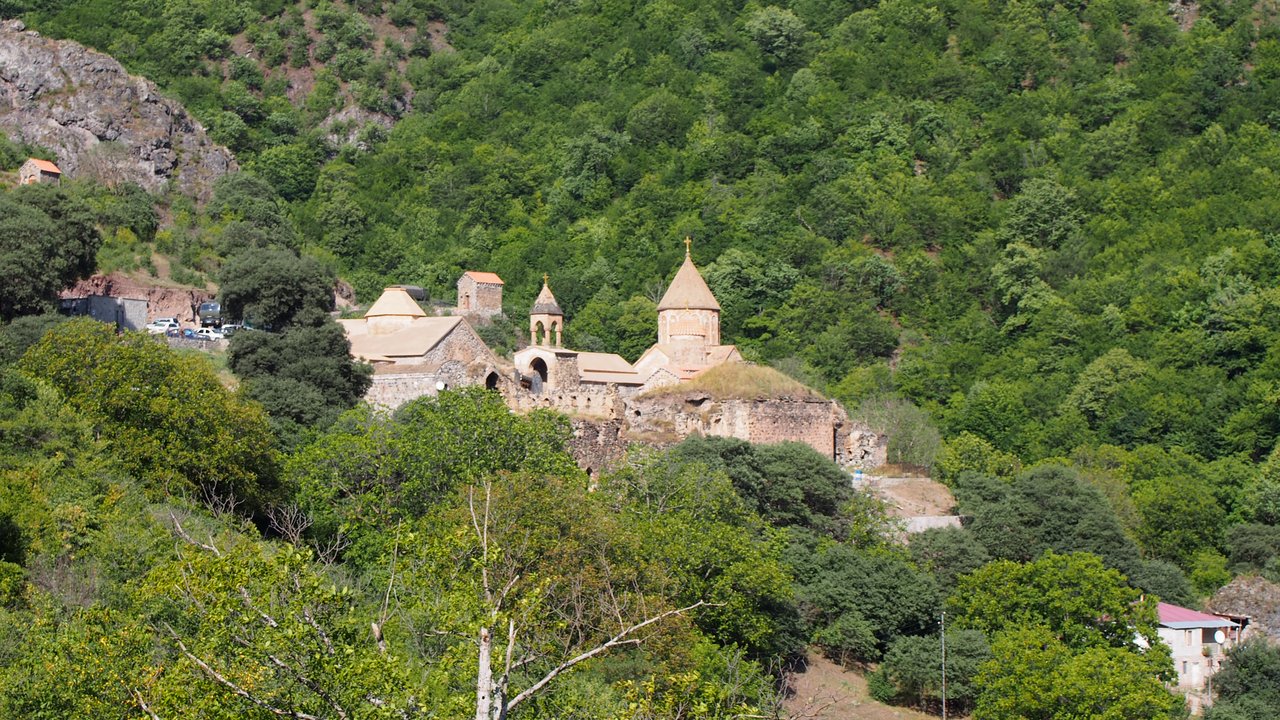The Monastery on the Hill: Dadivank
While many acknowledge that the world is far from perfect, we also appreciate that, for the most part, it is a pretty good place to live.
I mean, at least in first world countries like the US, disease and illness is at an all-time low. Poverty is on the decline, and the opportunity for people to make something of themselves has never been greater.
However, this is not the case everywhere.
In fact, there are countries across the globe that face death and destruction daily. Countries that are full of people suffering in silence. Countries that have remained unheard and unhelped for centuries.
Countries like Armenia, for example.
Armenia is a small European country that shares borders with Turkey, Georgia, and Azerbaijan. Well known for its beautiful scenery, stoic people, and amazing architecture, it also one of earliest Christian civilisations on the planet.
This makes it the home to a large number of incredible religious sites and structures.
Sites and structures that are now in danger.
See, the history of Armenia is full of bloodshed.
Over the course of centuries, this country faced down numerous invasions before eventually surrendering to the Soviet Union in the 1900s. Then, after regaining its independence in 1991, it was quickly drawn into a nasty war with Azerbaijan.
And now many of its religious sites are facing destruction.
Including the amazing Dadivank.
The Early History Dadivank
Dadivank is a famous Armenian monastery that is currently located in the Kalbajar District of Azerbaijan. Known colloquially as the “Monostary on the Hill”, this amazing building was an essential part of the Republic of Artsakh, until November 2020 when it was taken over by Azerbaijan.
The Monastery belongs to the Artsakh Diocese of the Armenian Apostolic Church, and consists of the Cathedral church of Saint Astvadzadzin, the chapel of Dadivank, and a few other buildings.
The monastery of Dadivank was founded by Saint Dadi in the 9th century.
The main church has Armenian script engraved onto all its walls. It also contains several distinct frescoes and has an incredibly bas-relief on the south facade of the cathedral. Added in 1214, this shows a princess giving the church an offering in memory of her sons.
A disciple of Thaddeus the Apostle, Saint Dadi was renowned for his role in spreading Christianity across Eastern Armenia. It was this reputation – and this desire to teach people about Christianity – that prompted his decision to build the monastery.
It is important to note that the role of this famous saint in the development of Dadivank is not mere conjecture. It was proven factual when, in July 2007, the grave of Saint Dadi was discovered under the holy altar of the main church.
The Modern History of Dadivank
Since it was first built in the early 900s, the monastery on the hill has undergone some changes. It was renovated in the early 1200s, after which it gained its reputation as the home of one of the most beautiful cathedrals in the country.
In this manner, it become recognised across the nation as a hub of spirituality.
Then, over the course of 700 years, it slowly fell into disarray. After being repeatedly attacked by neighbouring countries, the monastery begun to crumble – a process that was facilitated by the Soviet Union throughout the 1900s.
After gaining independence from the soviets in 1991, Armenia was drawn into a bloody civil war with Azerbaijan. Known as the First Nagorno-Karabakh War, it was during this time Dadivank was damaged further.
It looked like it may meet its doom.
Fortunately, the First Nagorno-Karabakh War ended in 1994, and the monastery was reopened to the Armenian people. Then, in 2004, a renovation process began with funding from Armenian-American businesswoman Edele Hovnanian, in an attempt to return it to its former glory.
The restoration ended in 2005 and resulted in the cathedral and the chapel being restored in full.
Finally, in August 2017, Italian specialists made their way to Dadivank to finish the cleaning and restoration of the monastery. The plan was to have the monastery restored completely by 2020 – a plan that was derailed when disaster struck.
Today’s Threat
In 2020, Azerbaijan again attacked Armenia – creating what is now known as the second Nagorno-Karabakh war.
After months of bloody fighting, Armenia was forced into a ceasefire agreement stipulating that they must withdraw from the Kalbajar region, and a return of the surrounding area to Azerbaijan.
As you may have guessed, the monastery was included in the territory to come under Azerbaijani control.
While many of the monastery’s relics, including bells, crosses, and khachkars, were rapidly transported to Armenia for protection, the monastery itself may not be able to avoid destruction after being handed over to a nation that intends to wipe out Armenians amazing Christian history, and its amazing monuments, with it.
There is a very real possibility that Dadivank will never return to the care of its people. A genuine chance that it will never be restored to what it once was. The possibility that it will never again get the opportunity to provide a hub of Christianity to the Armenian people.
While Armenia has surprised the world with is strength and stoicism in the face of danger time and time again, this threat may be too much for them to face alone.
To retake Dadivank they need the help and faith of the world.
They need your help, and your faith.
